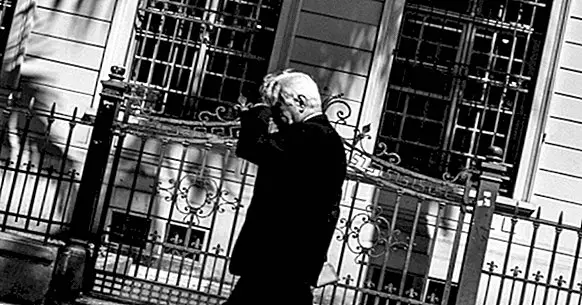The 5 types of Apraxia: differences, symptoms and frequent causes
Among many of the functions that the brain has, those of planning and coordinating movements and actions, are the most used by people, because without them we could do little.
When these functions fail, there appear disorders like any of the different types of apraxias in which to carry out any action or gesture can become something extremely difficult if not impossible.
- Recommended article: "The 15 most frequent neurological disorders"
What is an apraxia?
Apraxia is the inability to perform maneuvers or specific activities and is caused by a neurological disorder . People who suffer from one of the types of apraxia can try to perform an action or a gesture, since they have the physical ability to do so, but their brain is unable to send to build the sequence of movements to perform it. These obstacles in performing actions can manifest themselves in many different ways and the same person can have one or more types of apraxia at the same time.
The most effective treatments for this disorder are physical therapy, speech therapy and occupational therapy. But the degree to which therapy can alleviate the problem is variable among patients. In cases in which apraxia is underlying another neurological disorder, medical treatment for this disorder may be effective in healing it.
The main types of apraxia
The types of apraxia are classified according to their relationship with the action or movement that the person wants to perform. These types are the following.
1. Apraxia Ideacional
This type of apraxia disables the person in performing tasks in which a series of steps must be followed . As for example cooking.
Due to the difficulties in the conceptual ideations, these people can also find obstacles when correctly using everyday objects; even using parts of the body as an object, for example, try to write using your finger.
In any case, all these actions are not performed within a temporal sequence, which means that these patients are unable to access the memory that allows them to act correctly.
Causes
This specific form of apraxia is usually caused by a disturbance in the temporal sequence of motor acts . If the act of performing an action is considered a chain of maneuver links, the person can perform each individual action correctly, but is unable to carry out the succession of actions with coherence.
A couple of examples could be squeezing the car's accelerator without having put the keys or putting the food in a pan without having lit the fire.
2. Apraxia Construccional
Also called constructive apraxia. During the course of this disorder, the patient presents difficulties when it comes to drawing figures or building shapes .
But this neurological disturbance can take form in a large number of ways; For example, a person who asks you to copy or draw a picture can:
- Reverse or rotate the forms
- Disperse the pieces of the forms
- Skip the details
- Mismatch the angles of the figures
- Etc.
Causes
Conditions related to the functioning of the construction and spatial management can occur due to injuries produced in the middle of the brain; although this deficit is much more serious when there is brain damage in the right hemisphere.
So depending on the laterality, the amplitude and the place where the injury occurred, the deprivation of skills can take different forms.
3. Ideomotor Apraxia
Ideomotor apraxia is characterized by a lack of ability to carry out actions in response to purely verbal commands .
Likewise, people who suffer from it tend to have difficulties when performing simple movements, in comparison with other, more complex ones. As for example, say hello or open a door. However, these same people tend to continually explain all their actions, thus suffering a verbal overflow.
Causes
The causes are usually associated with lesions in the lower parietal lobe of the left hemisphere.
These patients tend to be somewhat clumsy when performing any act, whether it is a genuine movement of the person, or an imitation; presenting these apraxic anomalies in both the left and the right hand. In addition, they also tend to use everyday objects erroneously; using, for example, a fork to write.
4. Oculomotor apraxia
The main characteristic of this apraxia is presented in the form of difficulty to move the eyes in a desired way , specifically horizontally; the vertical movements of the eye are not affected by this. The person who suffers from it is forced to make compensatory movements, such as turning the head continuously, to be able to correctly perceive their surroundings.
This type of apraxia is likely to improve over the years when it occurs in young children. It is believed that by the growth of the underdeveloped part of the brain during the first years of life.
Causes
It is not known for sure why people are born with this condition. But it has come to be considered that genetics has a primordial role in this type of apraxia.
5. Other types
Apraxias may have other differential characteristics, for example the following.
Buccofacial, buccolingual or orofacial
This apraxia limits facial movements, making actions such as licking lips, whistling or winking very difficult or impossible.
Articulatory or speech
It is explained by a deficiency in the nervous system and is characterized by difficulties in planning and reaching speech sounds.



















